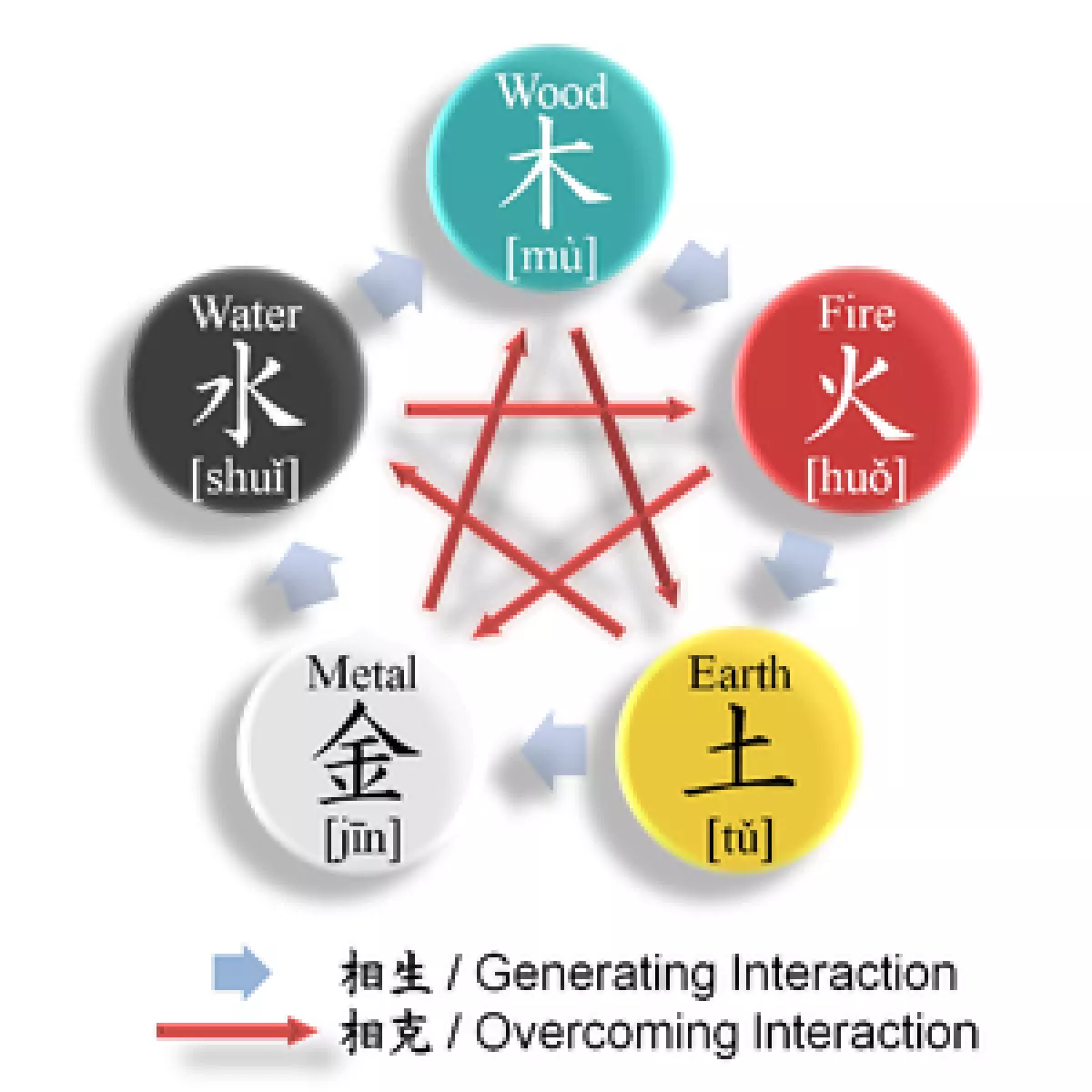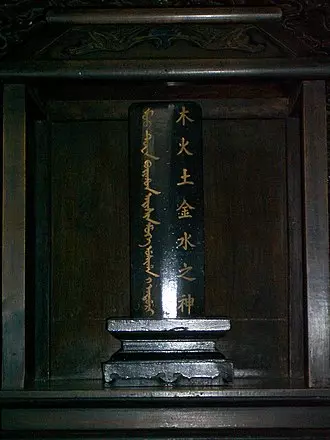 Diagram of the interactions between the wuxing.
Diagram of the interactions between the wuxing.
WuxingChinese五行 is a concept deeply rooted in traditional Chinese philosophy that seeks to explain a wide array of phenomena. This concept, often translated as Five Phases or Five Agents, encompasses the interplay between Fire, Water, Wood, Metal, and Earth. Developed during the Han dynasty in the second or first century BCE, the wuxing system has found applications across various fields such as music, feng shui, martial arts, and even medicine.
The Origin and Significance of Wuxing
The term Wuxing originally referred to the five major planets, which were believed to create the five forces governing earthly life. The Chinese characters for "five" (五) and "moving" (行) combine to form the word "Wuxing". It is important to note that "moving" represents planets since the Chinese word for planets literally translates to "moving stars" (行星). Scholars suggest that the concept of Wuxing amalgamated various earlier notions during the Han dynasty.
 Tablet in the Temple of Heaven of Beijing
Tablet in the Temple of Heaven of Beijing
However, the translation of Wuxing as "Five Elements" can be misleading. Unlike the Western four elements, which focus on form and substance, Wuxing primarily concerns itself with process, change, and quality. For example, the Wuxing element "Wood" signifies the vital essence of trees rather than the physical substance. With this in mind, some scholars propose alternative translations such as "five phases" or "the five agents".
The Interactions and Cycles of Wuxing
The philosophy of Wuxing explores the interconnectedness and harmony between the five elements through intricate cycles. These cycles can be categorized into generating, overcoming, inter-regulating, overacting, and counteracting.
Generating Cycle
The generating cycle, also known as the mother-son cycle, illustrates the positive interactions between the elements. Wood feeds Fire, Fire produces Earth, Earth bears Metal, Metal collects Water, and Water nourishes Wood. This cyclical pattern reflects the continuous flow and renewal of energy.
Overcoming Cycle
Conversely, the overcoming cycle, also known as the destructive cycle, demonstrates the negative interactions between the elements. Wood depletes Water, Water rusts Metal, Metal impoverishes Earth, Earth smothers Fire, and Fire burns Wood. These interactions illustrate the checks and balances that exist within the Wuxing system.
Inter-regulating, Overacting, and Counteracting
Further complexities emerge with the inter-regulating, overacting, and counteracting cycles. These cycles introduce additional nuances to the interactions between the elements, highlighting the dynamic nature of the Wuxing philosophy.
Applications of Wuxing
The applications of Wuxing are vast, transcending multiple disciplines:
Cosmology and Feng Shui
In feng shui, the art of Chinese geomancy, the five elements serve as the foundation for understanding the interactions between nature and human life. Each element is associated with specific colors, seasons, and shapes, creating a comprehensive framework for harmonizing energy flows within a space.
Dynastic Transitions
According to the political philosopher Zou Yan, the succession of dynasties in China correlates with the cyclic transitions of the five elements. The Mandate of Heaven, believed to sanction the legitimacy of a dynasty, manifests itself through auspicious signs in colors matching the dominant element of the new dynasty.
Chinese Medicine
In Chinese medicine, the principles of Wuxing are applied to understanding the influences on organs, physiological activities, and pathological reactions within the human body. Traditional Chinese medicine practitioners use this framework to diagnose and treat various ailments by rebalancing the flow of energy.
Music and Martial Arts
Even in the realms of music and martial arts, the concepts of Wuxing find their footing. Tai chi, for instance, incorporates the five elements to designate different directions and footwork patterns. Similarly, martial arts like tai chi and xingyiquan utilize the metaphoric representations of the elements to express different states of combat.
Gogyo in Japan
In Japan, Wuxing is adapted into gogyo. These theories have been extensively practiced in Japanese acupuncture and traditional Kampo medicine.
The philosophy of Wuxing offers a fascinating lens through which to comprehend the interplay of diverse elements. From the cosmic cycles to the human body's intricate networks, Wuxing continues to shape various facets of Chinese culture and beyond.
Sources: Wuxing (Chinese philosophy) - Wikipedia

















